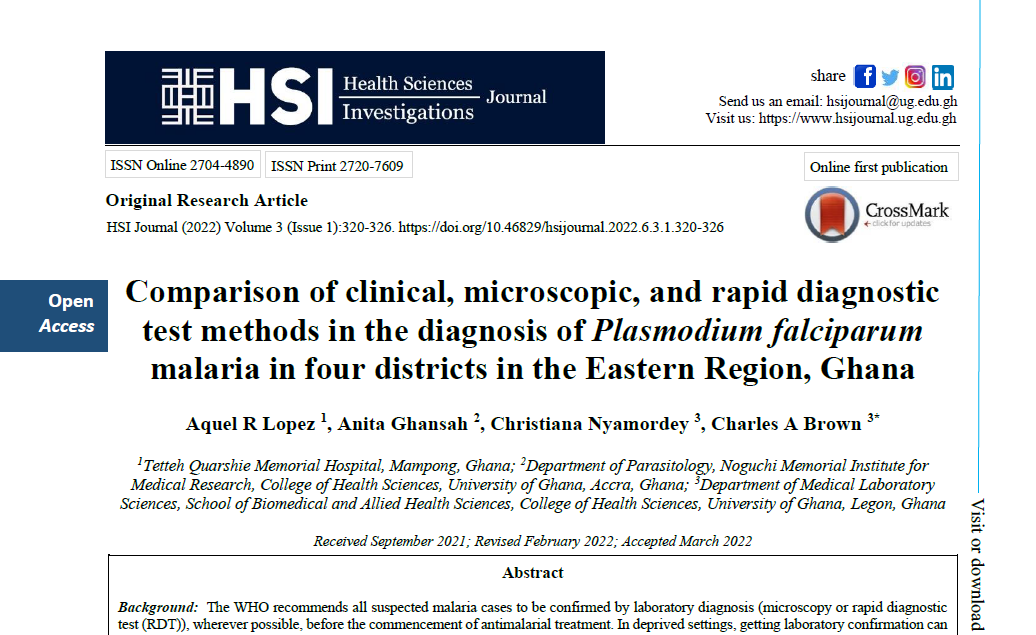Comparison of clinical, microscopic, and rapid diagnostic test methods in the diagnosis of Plasmodium falciparum malaria in four districts in the Eastern Region, Ghana
Comparison of clinical, microscopic, and rapid diagnostic test methods in falciparum malaria
Abstract
Background: The WHO recommends all suspected malaria cases to be confirmed by laboratory diagnosis (microscopy or rapid diagnostic test (RDT)), wherever possible, before the commencement of antimalarial treatment. In deprived settings, getting laboratory confirmation can be challenging and treatment may be based on a presumptive clinical diagnosis of malaria. However, the accuracy of clinical diagnosis is variable, and a universal predictive clinical algorithm is nonexistent.
Objective: This study aimed to compare the use of clinical, microscopic and RDT methods in the diagnosis of Plasmodium falciparum malaria in four districts in the Eastern Region of Ghana.
Methods: Patients initially seen and clinically diagnosed with malaria by a physician and referred for laboratory confirmation (microscopy and RDT) were recruited. Each patient provided a blood sample for malaria parasite detection. Microscopy was considered the diagnostic “gold standard”. The performance analysis included sensitivity, specificity, receiver operating characteristics (ROC), kappa and Youden index.
Results: In all 500 patients were recruited (33.2% males; mean age = 29.6 ± 20.3 years). Seventeen symptoms were reported — fever (84.4%), headache (64.2%) and chills (54.4%) were the highest. Hyperpyrexia (62.8%) and splenomegaly (38.8%) were the highest of the 6 vital signs recorded. Only Plasmodium falciparum parasites were identified by both microscopy and RDT. Prevalence values of 96.8%, 90.8%, and 43.0% were obtained for microscopy, RDT and clinical diagnosis, respectively (p < 0.05). Mean parasite density by microscopy was 16229.4 ± 10533.6 parasites/mL. Using microscopy as the gold standard, RDT reported a higher sensitivity (91.3%) compared to clinical diagnosis (43.6%), but a lower specificity (25.0% against 80.0%). Both RDT and clinical diagnosis had low negative predictive values, 8.7% and 4.2% respectively, against microscopy. There was poor consensus (kappa < 0.20) between all three diagnostic approaches.
Conclusion: All clinically diagnosed malaria cases should be confirmed with a laboratory test, preferably microscopy before antimalarial treatment starts.


